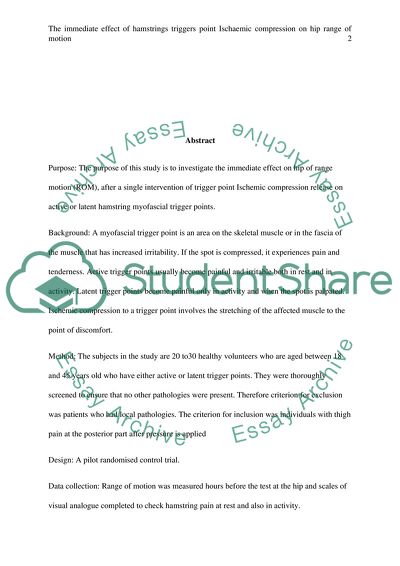Cite this document
(Effect of Hamstrings Triggers Point Ischaemic Compression on Hip Range Research Proposal, n.d.)
Effect of Hamstrings Triggers Point Ischaemic Compression on Hip Range Research Proposal. https://studentshare.org/health-sciences-medicine/1878438-the-immediate-effect-of-hamstrings-trigger-point-ischaemic-compression-on-hip-range-of-motion
Effect of Hamstrings Triggers Point Ischaemic Compression on Hip Range Research Proposal. https://studentshare.org/health-sciences-medicine/1878438-the-immediate-effect-of-hamstrings-trigger-point-ischaemic-compression-on-hip-range-of-motion
(Effect of Hamstrings Triggers Point Ischaemic Compression on Hip Range Research Proposal)
Effect of Hamstrings Triggers Point Ischaemic Compression on Hip Range Research Proposal. https://studentshare.org/health-sciences-medicine/1878438-the-immediate-effect-of-hamstrings-trigger-point-ischaemic-compression-on-hip-range-of-motion.
Effect of Hamstrings Triggers Point Ischaemic Compression on Hip Range Research Proposal. https://studentshare.org/health-sciences-medicine/1878438-the-immediate-effect-of-hamstrings-trigger-point-ischaemic-compression-on-hip-range-of-motion.
“Effect of Hamstrings Triggers Point Ischaemic Compression on Hip Range Research Proposal”. https://studentshare.org/health-sciences-medicine/1878438-the-immediate-effect-of-hamstrings-trigger-point-ischaemic-compression-on-hip-range-of-motion.


